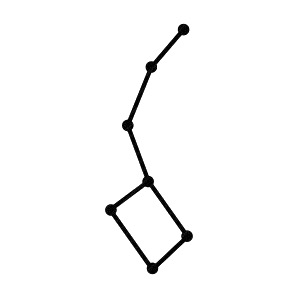Ursa (1990)
Four Seasons for Contrabass and Orchestra
Duration: 20 minutes
Doublebass; 2(opt pic)+pic.222/2200/timp.2perc/hp.pf/str
Orchestral version may be performed with Cello or Doublebass Solo;
Piano Reduction may be performed with either Cello or Doublebass.
May also be performed with Cello or Doublebass + Piano Red., Harp, Perc. & Strings
Commissioned by the National Endowment for the Arts
Premiere Performance: November 29, 1990; San Antonio Symphony;
Gary Karr, Contrabass; Christopher Wilkins, Conductor
This attractive and breathtakingly virtuosic concerto is intended for
youth and family concerts as well as for adult audiences.
 Reviews:
Reviews:
…an involving programmatic soundscape whose inventively drawn imagery of a bear cub’s first year – from birth through hibernation and awakening at Spring’s thaw – could take its place beside the likes of Poulenc’s Babar.
San Antonio Light
…one can “see” the music…The imagery is astounding…Being able to convey humor and the forces of nature side by side while showcasing an instrument that is not a natural solo star speaks well of his genius.
San Antonio Express-News
…makes a strong case that the orchestra’s foundation instrument can also serve handsomely as one of its spires…a lyrical richly coloristic and wonderfully tender work…the orchestration is a model of clarity, transparency and iridescent color…In the lovely Winter movement (“Lull-A-Bear”), the contrabass’ velour pianissimo in the high register seemed altogether apt for Rodríguez’ gently rocking solo lines set against a glistening orchestral backdrop…a masterful example of the art that conceals art.
Musical America
Composer Notes
The National Endowment for the Arts commissioned Ursa, Four Seasons for Double Bass and Orchestra (1990) for Gary Karr, bassist, who gave the premiere performance with the San Antonio Symphony, Christopher Wilkins, conductor. In addition to the original version for bass and orchestra, the work may also be performed by cello and orchestra, bass or cello and piano, or by either bass or cello in a chamber version accompanied by piano, harp, timpani, percussion and strings.
As the title indicates, Ursa (Latin for "bear") is programmatic. Like Vivaldi's famous violin concertos, my Four Seasons are based on texts, here fragments from four children's poems by Mary Medrick about a new-born bear and the adventures and discoveries of his first four seasons.
In the high, mysterious opening, percussionists set the scene by drawing contrabass bows across vibraphone and antique cymbals. For me, that first note represents the long curved handle of The Big Dipper in the constellation also known as Ursa Major (“Big Bear”).

The solo bass enters in violin register with a three-note motive that suggests the three lines necessary to draw a box around handle to complete the image. Variants of that motive recur in all four movements to unify the work, interpreted four ways to portray the bears' changing seasonal activities:
I. “Summer” (“... at first my eyes cannot open to the light ... I follow Mother ...”) contains a phrase from J.S. Bach's Cantata 78, Jesu der du meine Seele, with rapidly moving solo figuration and a slower-moving accompaniment to depict the text, Wir eilen mit schwachen, doch emsigen Schritten (We hasten with weak, but diligent footsteps). Here, we have Mama Bear striding, with Baby Bear behind her, running as fast as he can to keep up.
II. “Autumn” (“...We must be very full before we go to sleep ...”) breaks into a brisk Scherzo which depicts the bears playfully stuffing themselves with as much food as they can. Energetic outbursts of virtuoso double bass “gobbling” passages alternate with satisfied, reflective interludes.
III. “Winter” (“Lull-a-Bear”) lovingly depicts the bears’ hibernation. I call this movement a "BEAR-ceuse" (after the French berceuse, or cradle song), in which the double bass plays a gentle melody in its highest register, then repeats it in its lowest octave, ending in a long, resonant snore.
IV. In “Spring” (“...Wake up and play...”), the bears open their eyes, and a mighty, Falstaffian trill spreads upward through the orchestra to depict the crack of breaking ice. This spirited and joyous finale features an extended C pedal point in homage to the celebrated contrabass passage in the rustic fourth movement of Haydn's Symphony #89 in C, called "The Bear." The work ends with a transcendent “And-they-lived-happily-ever-after” coda inspired by the ending of “The Fairy Garden” from Ravel’s Mother Goose suite.